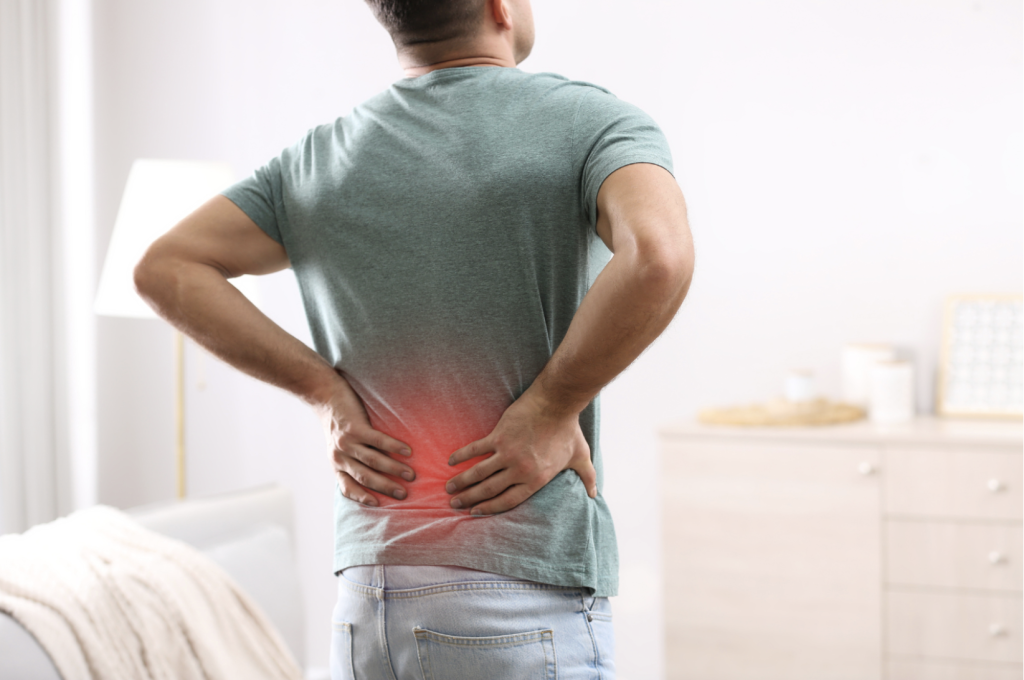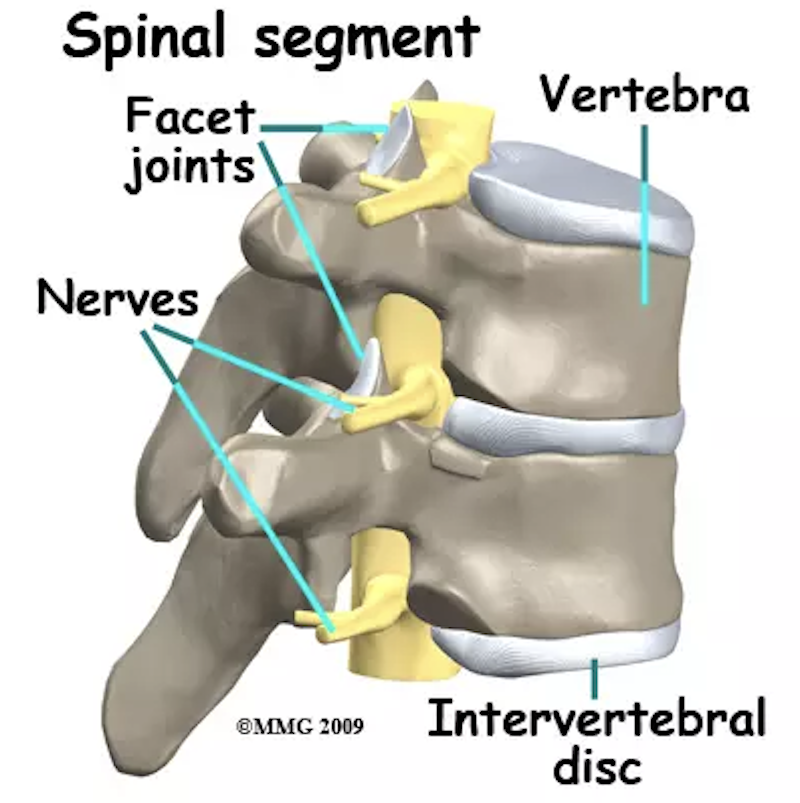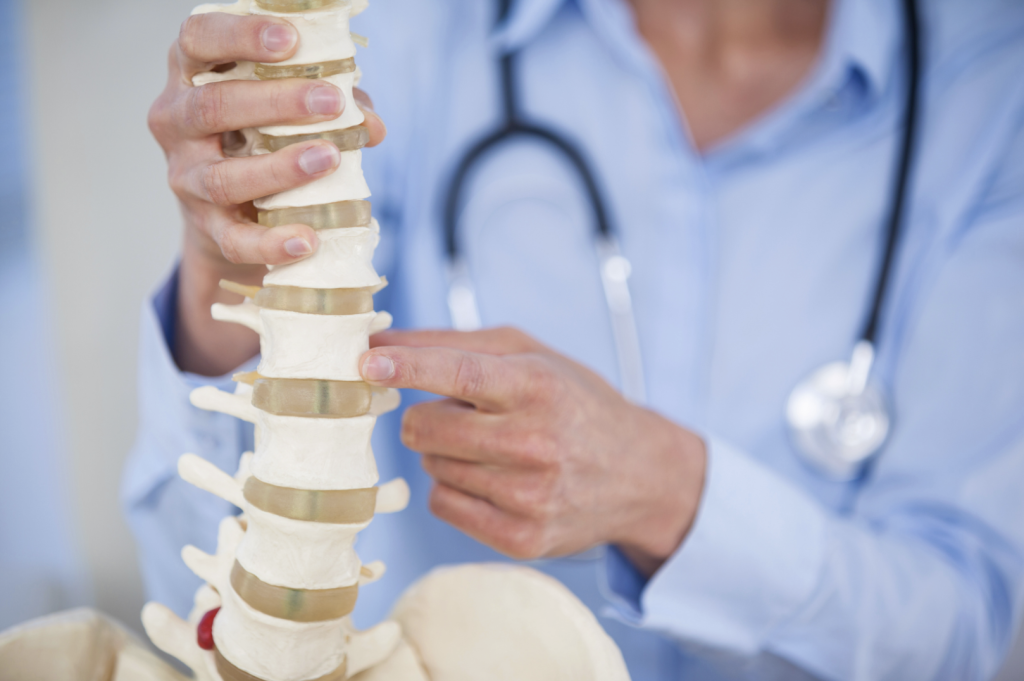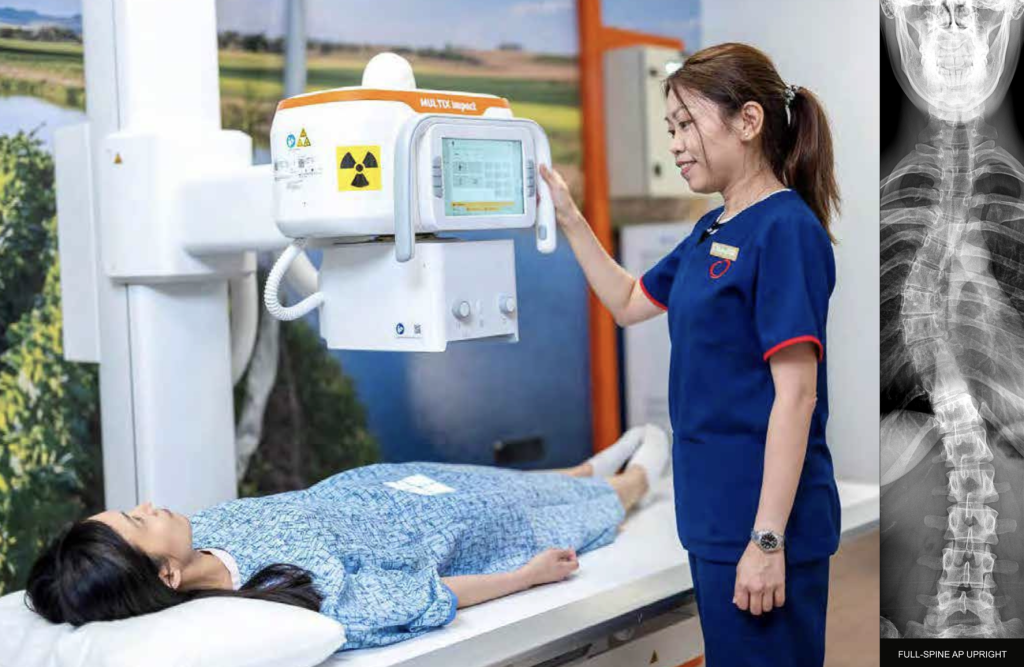



Our spine is one of the most important structures of the body. In fact, it is the central support structure for the entire body, playing a vital role in movement, stability, and nerve communication. Although any kind of joint pain can be debilitating, spinal involvement may result in greater functional impairment, affecting mobility, daily function, and quality of life. Spine joint pain is different from typical back pain. Spine joint pain can also be caused by underlying conditions that can result in severe consequences. This article will walk you through the common causes of spine joint pain, spine pain vs back pain, key symptoms to watch for, and how diagnostic imaging can help identify issues early and start appropriate treatment.
Many people use the terms spine pain and back pain interchangeably, but they are not always the same. Understanding the distinction helps individuals seek the right treatment and diagnostic imaging early.
Back pain refers to discomfort that one feels anywhere along the back, from the neck (cervical spine), mid-back (thoracic spine), to the lower back (lumbar spine). This pain can originate from muscles, ligaments, fascia, nerves, or bones.
Sometimes, back pain is caused by muscle strain or poor posture. In other cases, it may be due to problems within the spine itself. Identifying the cause is important to ensure you get the right treatment.

Image Source: Northern Hills Sports Physiotherapy
Spine pain refers specifically to pain that originates from the spinal structure itself. This includes:
Many patients initially think they have “just back pain,” when in fact they may be experiencing early symptoms of a spinal disorder. Identifying spine pain can allow for early treatment to prevent progression and avoid unnecessary or ineffective therapies.
Summary Table:
| Feature | Back Pain | Spine Pain |
| Origin | Muscles, ligaments, posture | Spinal discs, joints, vertebrae, nerves |
| Cause | Injury, tension, poor posture | Degeneration, arthritis, disc herniation |
| Pain Pattern | Localised, muscular, dull ache | Sharp, radiating, often with neurological symptoms |
| Diagnostic Tools | Often clinical exam, sometimes X-ray | Usually requires MRI, CT, or X-ray |
| Treatment | Rest, physiotherapy, ergonomics | Imaging-guided intervention, rehab, surgery if needed |

Spine-related pain can manifest in different areas along the spinal column. Each type has its own causes, symptoms, and clinical considerations.
This is the most common form of spine pain, particularly in adults over 30. It often stems from:
Symptoms:
Thoracic spine pain is relatively less common and can be caused by:
Symptoms:
Neck pain from the cervical spine can impact the neck, shoulder, and arms. Common causes include:
Symptoms:
The sacroiliac joints connect the spine to the pelvis. Causes of sacroiliac joint pain may include:
Symptoms:
Autoimmune conditions such as ankylosing spondylitis cause chronic inflammation in the spinal joints, especially in the sacroiliac area.
Symptoms:

Spine joint pain can stem from a variety of structural or inflammatory problems. Understanding these causes helps ensure timely medical intervention.
Our spine comprises vertebral joints with discs between them. These discs lose hydration and elasticity as one gets older. In degenerative disc disease, this wear-and-tear leads to reduced disc height, instability, and pain from adjacent vertebral joints. It commonly affects the lumbar (lower back) and cervical (neck) regions.
This common form of arthritis can affect the facet joints of the spine, leading to stiffness, inflammation, and chronic back pain. Over time, cartilage breakdown causes bone-on-bone friction and the formation of bone spurs (osteophytes), which may compress nearby nerves.
A disc herniation occurs when the soft inner gel of a spinal disc pushes out through a tear in the outer layer. This can irritate or compress spinal nerves, causing pain, tingling, or numbness in the back and limbs.
This autoimmune condition causes chronic inflammation in the spinal joints, particularly the sacroiliac joints. Sacroiliac joint pain symptoms often begin in early adulthood and may include pain that improves with movement but worsens with rest. Sacroiliac joint pain is a condition that can be effectively managed with various non-surgical and surgical treatments. Early diagnosis of sacroiliac joint pain allows for timely intervention to alleviate pain and improve function through appropriate sacroiliac joint pain treatment.
While occasional back soreness may not be a cause for alarm, the following symptoms may indicate deeper joint-related spine issues:

It is important not to ignore symptoms of spine joint pain that persist or worsen. Seek medical evaluation if you experience:
Early and accurate diagnosis is essential in managing spine joint pain effectively. Spine and joint pain specialists typically order diagnostic imaging that allows them to visualise internal spinal structures in detail and identify the root cause. The common imaging modalities include:
Delays in diagnosis can result in:
Early imaging not only improves treatment outcomes but also enables patients to explore non-invasive or conservative management options like physiotherapy or targeted injections, before jumping into surgical treatments.
At RadLink, we offer a full suite of advanced diagnostic imaging services tailored to uncover the root causes of spine-related joint pain. Our radiologists work closely with referring physicians and specialists to ensure precise, timely reporting, empowering patients with the clarity they need to proceed with treatment confidently. Patients receive:
Our diagnostic services for spine joint pain include:
When it comes to evaluating spinal joint pain, especially conditions that span large anatomical regions, traditional imaging may not always offer the full picture. At RadLink Camden, we bridge this diagnostic gap with our Long Film X-ray service—a powerful imaging solution designed specifically to capture the entire spine in one seamless view.

RadLink Camden Imaging Centre has introduced the new Long Film X-ray service, which is a modern technology that captures large anatomical areas in a single image. For diagnosing spine-related problems, long-film x-ray can provide a continuous, high-resolution view of the entire spinal column, from the cervical spine (neck) to the sacrum (lower back). Long-Film X-ray enhances diagnostic detail and accuracy in evaluating conditions, such as spinal abnormalities, extremity fractures, and long bone pathologies. With fewer image captures needed, this service offers a more efficient and comfortable experience, minimising exposure and maximising diagnostic clarity.
RadLink (Camden)
1 Orchard Boulevard, Camden Medical #16-03 to #16-06 Singapore 248649
Tel: +65 6836 0808
Fax: +65 6341 5787
WhatsApp: +65 8786 1677
Unlike conventional X-rays that only image a limited portion of the spine, the Long Film X-ray provides a comprehensive view that helps doctors identify alignment problems or disease progression across the entire spinal axis. This is especially valuable for:
The broader diagnostic scope provided by long-film imaging ensures that no vertebral segment is missed, allowing for earlier detection and more precise treatment planning. Whether you’re experiencing persistent back pain or recovering from an injury, RadLink’s imaging services can provide the clarity needed for effective treatment planning.
Struggling with Persistent Back or Spine Joint Pain? Or suffering from unexplained or ongoing lower back pain?
Early detection through advanced spine imaging can make a crucial difference in managing pain and improving your quality of life. At RadLink, we support your care team with high-quality diagnostic imaging services in Singapore. If you’re experiencing unexplained or persistent back pain, don’t delay—contact your healthcare provider or spine specialist for spine imaging with RadLink to support accurate diagnosis and effective treatment planning. Don’t let spine joint pain limit your quality of life.
Spine pain refers to pain originating from spinal structures (discs, joints, nerves), while back pain is a more general term that may include muscular pain, strain, or postural discomfort.
If your pain lasts longer than 4 weeks, is severe, or includes symptoms like numbness, weakness, or loss of bladder control, seek medical attention and consider diagnostic imaging.
Not always. Your doctor may start with an X-ray or physical exam. MRI is used when nerve involvement or soft tissue issues are suspected.
Yes, many cases of spine joint pain improve with physiotherapy, lifestyle changes, and non-invasive treatments. Imaging helps determine the most effective approach.
It is mandatory to consult your GP or spine specialist for a referral to get an X-ray or MRI at RadLink.